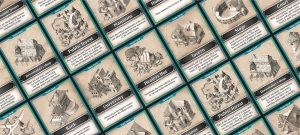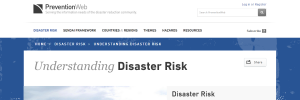Gameplay
Take cards out and shuffle them, set cards on the table
For the very first round, the facilitator draws a card from the ‘Warm Up Round Disaster’ deck and describes the disaster.
The moderator takes one card from the ‘Time to Prepare’ deck and places it on the table face up.
The facilitator takes one card from the ‘Forecast’ deck and interprets what the level of severity would mean for that disaster, and tells the players the interpretation
Each of the players gets four blank ‘Things To Use’ cards and four blank ‘Things To Save’ cards.
Players discuss and try to determine what, in the face of the disaster, might be categorized as ‘Things To Use’ and ‘Things To Save’, and write (or draw) one item on each of the blank cards
The moderator puts players’ cards into respective decks. She/he sets the ‘Things To Save’ cards in the ‘Things At Risk’ section of the board. Then, she/he shuffles the ‘Things To Use’ cards.
After discarding the top 4 cards from the ‘Things to Use’ deck, each of the players are given three ‘Things to Use’ cards.
The players have to create a story together using the cards they were given before (10 minutes). After 5 minutes facilitator introduces a ‘Wild Card’. Each player selects one ‘Thing to Use’ card from their hand and places it on the ‘Things to Use’ section. Players describe to the group why they think this item will be useful for in that situation. When the ‘Wild Card’ is played, the players must adapt their story to the new situation.
After finishing the stories, the players must take turns acting out their story silently for the other teams (3 minutes per team).
After all teams have performed charade, the facilitator rolls the die to see whether the disaster occurred. If the die matches any of the dies faces shown on the severity card, the disaster happens.
The facilitator asks all the players from all teams to vote for the ‘winning team’ (blind vote).
Context
Story Go Round was designed to help bridge the gap between local communities knowledge of the disaster management and the data banks of the Red Cross, by making Vulnerability and Capacity Assessment (VCA) research easier and more engaging.
Target group
Benefits
Encouraging creative thinking and collaborative planning in communities, and in the face of a disaster.
Teaching probability, simulating forecasting, and opening communication about tradeoffs.
Creating spaces for discussion of what items to prioritize in disaster scenarios.
Creating a picture of the community’s capacities for the VCA process.
Trivia
It is easy to incorporate elements of gender and culture into the game. The only limitation is players’ creativity.
Created by
Type
Genre
Price
Number of players
Number of moderators
Duration
Materials
paper (cut into large cards)
dice (or other probability counter)
Languages




